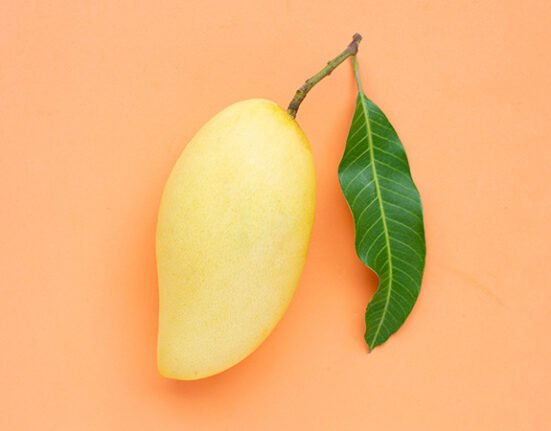Pruning tomato branches is a vital technique for cultivating healthy and productive tomato plants. By removing superfluous or congested branches, growers can enhance air circulation and sunlight penetration to the remaining branches, resulting in improved fruit production. Furthermore, pruning helps prevent the spread of diseases and pests by eliminating infected or damaged branches.
This process also enables the plant to redirect its energy towards developing larger and more flavorful fruits, rather than expending resources on unnecessary growth. Overall, pruning tomato branches is a crucial step in promoting the overall health and productivity of tomato plants. Pruning tomato branches also plays a key role in maintaining the plant’s shape and size, making it easier to manage and harvest.
Without regular pruning, tomato plants can become unwieldy and difficult to control, leading to a tangled mass of branches that can obstruct access to the fruits. By pruning tomato plants regularly, growers can ensure they remain manageable and tidy, facilitating care and harvesting. Additionally, pruning can help extend the lifespan of tomato plants by reducing the risk of overcrowding and disease, ultimately leading to a longer and more productive growing season.
Key Takeaways
- Pruning tomato branches can lead to a higher yield and better fruit quality
- The best time to prune tomato branches is when the plant is young and has developed a few sets of true leaves
- To prune tomato branches for maximum yield, remove the suckers and any diseased or damaged branches
- The benefits of pruning tomato branches include improved air circulation, better sunlight exposure, and easier maintenance
- Common mistakes to avoid when pruning tomato branches include removing too many branches at once and not using clean tools
When is the Best Time to Prune Tomato Branches?
The Ideal Time for Pruning Tomato Branches Pruning tomato branches is an essential task that should be performed regularly throughout the growing season. This process should start when the plant is still young and continue as it matures. Early pruning encourages strong and healthy growth, shapes the plant for optimal fruit production, and promotes a balanced structure. ### Monitoring Plant Development As the plant grows, it’s crucial to monitor its development and prune as needed. This ensures a balanced and productive structure, which in turn, boosts fruit production. Regular pruning also helps maintain the plant’s overall health and appearance. ### Considering Weather Conditions Weather conditions play a significant role in determining the best time to prune tomato branches. It’s essential to avoid pruning during periods of extreme heat or drought, as this can cause stress to the plant and hinder its ability to recover from the pruning process. Instead, prune during cooler parts of the day or when the weather is mild and overcast. This minimizes stress on the plant and allows it to recover more quickly. ### Pruning for Optimal Results In summary, the best time to prune tomato branches is throughout the growing season, taking into account the plant’s growth stage and the weather conditions. By pruning regularly and considering these factors, you can promote healthy growth, increase fruit production, and enjoy a bountiful harvest.
How to Prune Tomato Branches for Maximum Yield
When pruning tomato branches, it’s important to focus on removing any suckers that develop in the crotch joint between two branches. Suckers are small shoots that grow between the main stem and a branch, and if left unchecked, they can divert energy away from fruit production and lead to overcrowding. By removing these suckers, you can encourage the plant to put more energy into developing larger and tastier fruits, ultimately leading to a higher yield.
In addition to removing suckers, it’s also important to prune any overcrowded or damaged branches that may be hindering air circulation or sunlight exposure. Look for any branches that are crossing or rubbing against each other, as well as any that are diseased or infested with pests. By removing these branches, you can improve the overall health of the plant and promote better fruit production.
When pruning, be sure to use clean and sharp pruning shears to make clean cuts that will heal quickly and minimize the risk of disease. Overall, by focusing on removing suckers and overcrowded or damaged branches, you can prune tomato plants for maximum yield.
The Benefits of Pruning Tomato Branches
| Pruning Stage | Time | Method |
|---|---|---|
| Initial Pruning | 4-6 weeks after transplanting | Remove suckers below first flower cluster |
| Maintenance Pruning | Throughout growing season | Remove new suckers and lower leaves |
| Final Pruning | 4-6 weeks before first expected frost | Remove remaining leaves and suckers |
There are numerous benefits to pruning tomato branches, including improved air circulation and sunlight exposure, reduced risk of disease and pests, and increased fruit production. By removing unnecessary growth, you can create a more open and airy environment for your tomato plants, which can help prevent the development of fungal diseases such as blight. Additionally, by allowing more sunlight to reach the remaining branches, you can promote better fruit development and ripening, leading to larger and tastier tomatoes.
Pruning tomato branches also helps to promote a more organized and manageable plant structure, making it easier to care for and harvest your crop. By removing overcrowded or damaged branches, you can create a more balanced and tidy plant that is less prone to tangling or collapsing under the weight of its fruits. This can make it easier to access the fruits for harvesting and reduce the risk of damage or spoilage.
Overall, the benefits of pruning tomato branches are numerous, including improved plant health, increased fruit production, and easier plant management.
Common Mistakes to Avoid When Pruning Tomato Branches
One common mistake when pruning tomato branches is removing too much growth at once. While it’s important to remove unnecessary or damaged branches, it’s also important to avoid over-pruning, as this can stress the plant and hinder its ability to recover. Instead, aim to prune gradually throughout the growing season, focusing on removing suckers and overcrowded or damaged branches as needed.
This will help minimize stress on the plant and allow it to recover more quickly from the pruning process. Another common mistake is using dull or dirty pruning shears when pruning tomato branches. Using dull shears can result in ragged cuts that take longer to heal, increasing the risk of disease and pest infestation.
Additionally, using dirty shears can spread diseases from one plant to another. To avoid these issues, be sure to regularly clean and sharpen your pruning shears before each use. This will help ensure clean cuts that heal quickly and minimize the risk of disease transmission.
Overall, by avoiding common mistakes such as over-pruning and using dull or dirty shears, you can ensure that your tomato plants remain healthy and productive throughout the growing season.
Tools and Techniques for Pruning Tomato Branches
Choosing the Right Tools
The most commonly used tool for pruning tomato plants is a pair of sharp pruning shears. Look for shears with a clean cutting edge that can make smooth cuts without crushing or tearing the branches. Additionally, consider using long-handled shears or pruners for hard-to-reach branches, as well as smaller hand pruners for more delicate work.
Mastering Pruning Techniques
When pruning tomato branches, it’s essential to make clean cuts close to the main stem or branch when removing suckers or unwanted growth. This will help promote quick healing and minimize the risk of disease or pest infestation.
Removing Diseased or Infested Branches
Be sure to remove any diseased or infested branches promptly to prevent the spread of problems throughout the plant. This will help maintain the overall health and productivity of your tomato plants throughout the growing season.
Tips for Pruning Tomato Branches in Different Growing Conditions
When it comes to pruning tomato branches in different growing conditions, there are a few key tips to keep in mind. In hot and dry climates, it’s important to avoid pruning during periods of extreme heat or drought, as this can stress the plant and hinder its ability to recover from the pruning process. Instead, aim to prune during cooler parts of the day or when the weather is mild and overcast.
This will help minimize stress on the plant and allow it to recover more quickly from the pruning process. In cooler climates with shorter growing seasons, it’s important to start pruning early in the season to encourage strong and healthy growth, as well as to shape the plant for optimal fruit production. As the plant grows, continue to monitor its development and prune as needed to maintain a balanced and productive structure.
Additionally, consider using row covers or other protective measures in cooler climates to extend the growing season and protect your plants from frost damage. Overall, by considering the specific growing conditions in your area and adjusting your pruning practices accordingly, you can ensure that your tomato plants remain healthy and productive throughout the growing season. In conclusion, pruning tomato branches is an essential part of growing healthy and productive tomato plants.
By understanding the importance of pruning, knowing when is the best time to prune, how to prune for maximum yield, recognizing the benefits of pruning, avoiding common mistakes when pruning, using the right tools and techniques for pruning, and considering different growing conditions when pruning tomato branches, you can ensure that your plants remain healthy and productive throughout the growing season. With proper care and attention, you can enjoy a bountiful harvest of delicious tomatoes from your well-pruned plants.
FAQs
What is pruning tomato branches?
Pruning tomato branches involves removing certain parts of the plant, such as suckers and lower leaves, to promote better air circulation, reduce disease risk, and encourage fruit production.
When should tomato branches be pruned?
Tomato branches should be pruned when the plant is actively growing and has developed a few sets of true leaves. It is best to prune in the morning or evening to avoid stressing the plant during the heat of the day.
How should tomato branches be pruned?
To prune tomato branches, use clean, sharp pruning shears to remove suckers (the small shoots that grow in the crotch between the main stem and branches) and lower leaves. It is important to make clean cuts to avoid damaging the plant.
Why is pruning tomato branches important?
Pruning tomato branches helps to improve air circulation around the plant, reduce the risk of disease, and direct the plant’s energy towards fruit production. It also helps to manage the size and shape of the plant for better growth and support.






